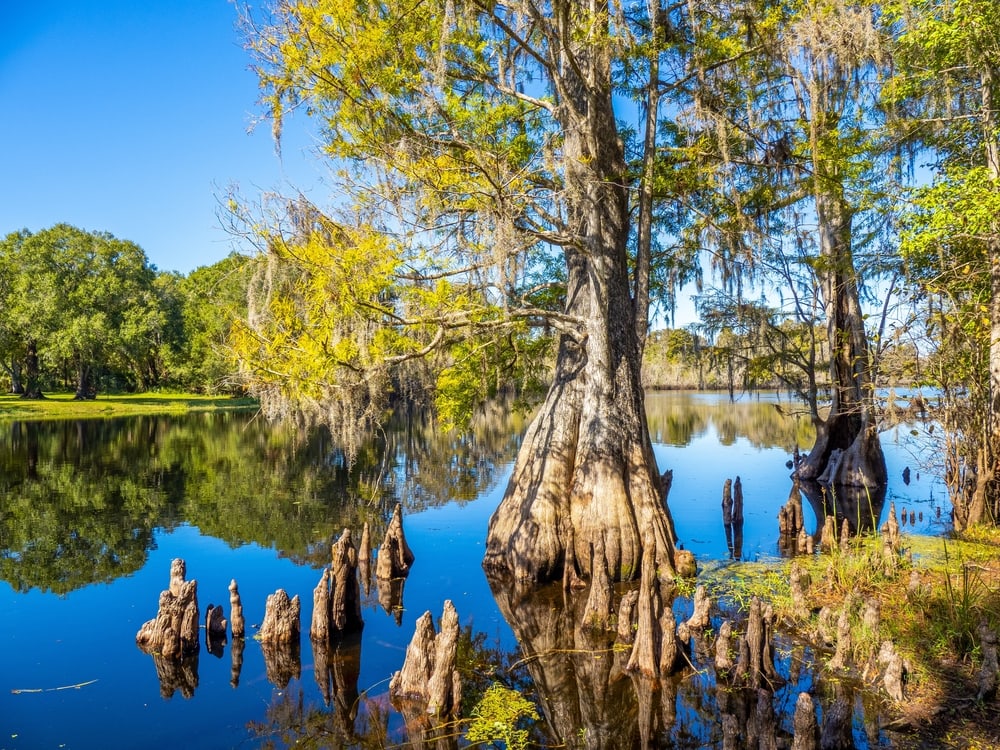
Whether it’s a pond or a lake, bodies of water add so much beauty to our lives. They’re easy to enjoy regardless of whether we’re taking a dip, fishing, boating, or reading a book. In this article, we’ll be covering the largest natural and manmade lakes in America. Get ready to be awed as we dive from one stunning waterscape to another.
Largest Lakes in the U.S.: Everything You Want to Know About Location, Size, and Activities
What is a Lake?

A lake is a body of water that is set apart from any other water outlet and is surrounded by land. Ponds are often mistaken for lakes. Lakes are much deeper than ponds and receive no sunlight to the bottom. The areas that don’t receive light are called aphotic zones.
Lakes can stand on their own without being fed from another source or get their water from rivers, streams, and/or other lakes. A lake is bigger than one acre. Whereas a pond is a body of water covering fewer than 0.5 acres (0.2 hectares) in an area and less than 20 feet (6 meters) in depth.
Natural Lakes vs Manmade Lakes
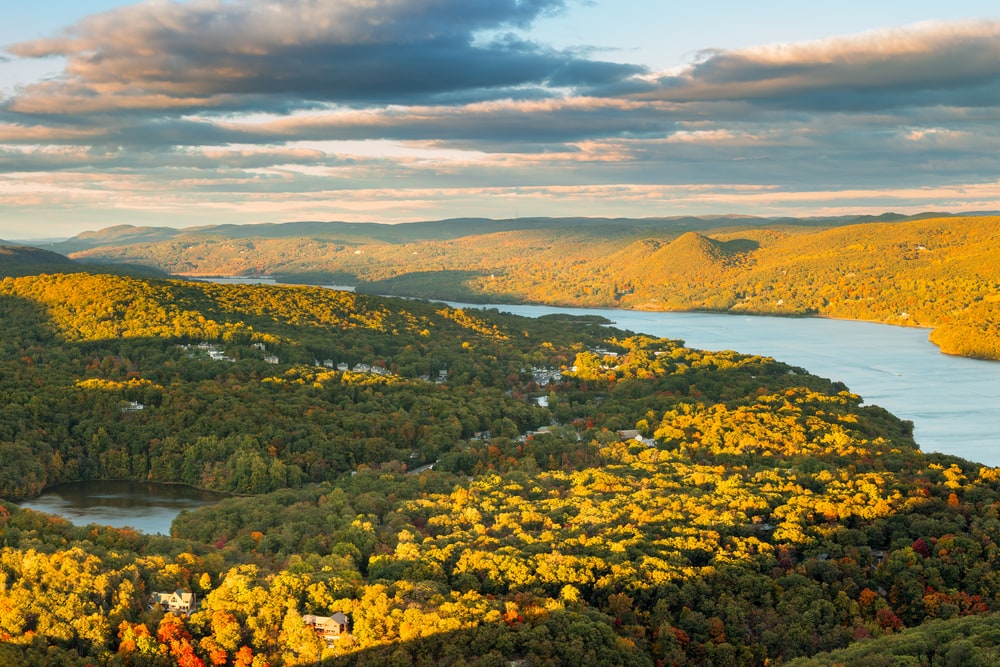
The definition of a natural lake is a body of water that has no evidence of a dam. There is also available information indicating that the lake was natural even if a dam exists to alter the depth of the lake.
Many natural lakes were or are formed by receding glaciers that melt and fill bowl-shaped basins. A lot of lakes that cover the world’s surface were formed more than 18,000 during the most recent ice age.
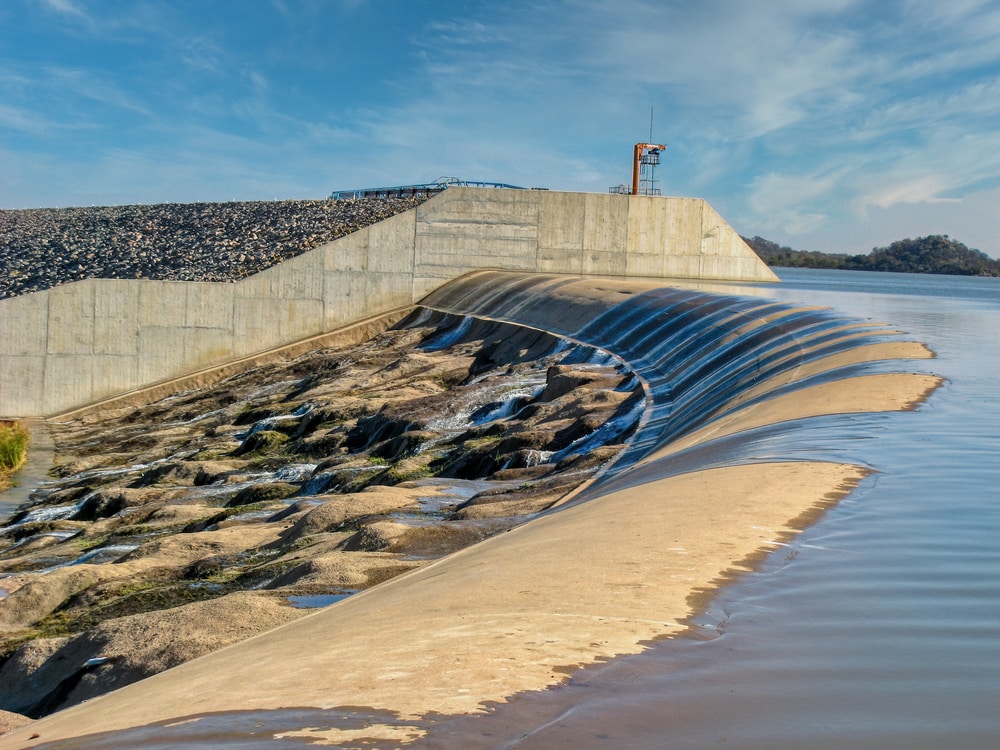
Man-Made lakes are typically associated with reservoirs or dams and are defined as bodies of water that are constructed. They are created by the use of a dam where portions of a river are diverted to a reservoir to store water.
Saltwater or Freshwater?
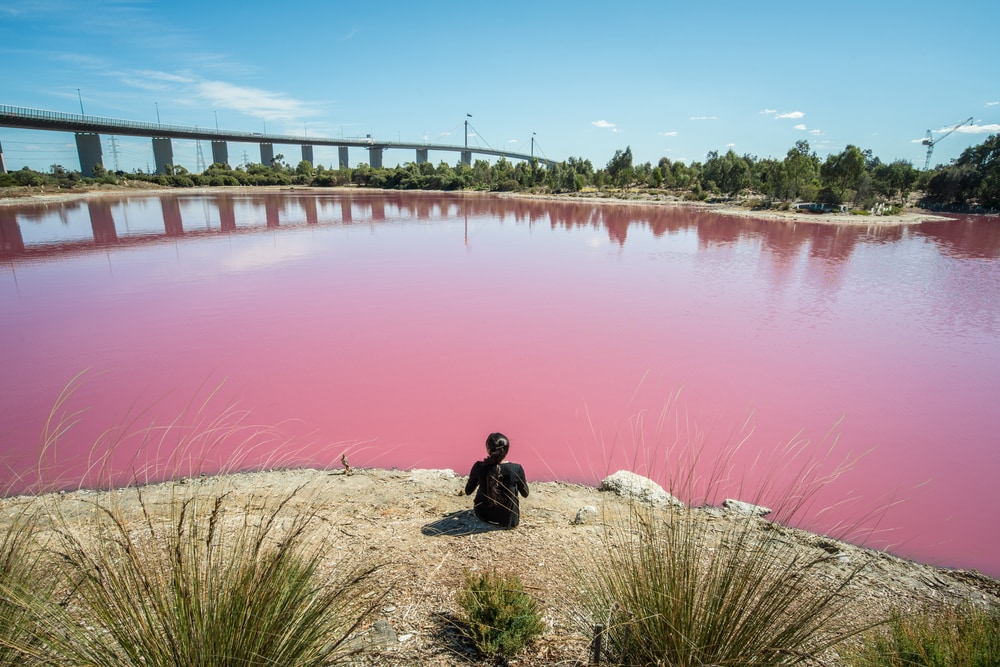
Saltwater is mainly found in the oceans and seas, but can also be found in lakes. The sodium chloride in water is what makes it salty. It’s possible to swim in a lake filled with salt. However, depending on the level of salt you may find that you will float more than you will swim. About 97.5% of the earth’s water is saltwater.
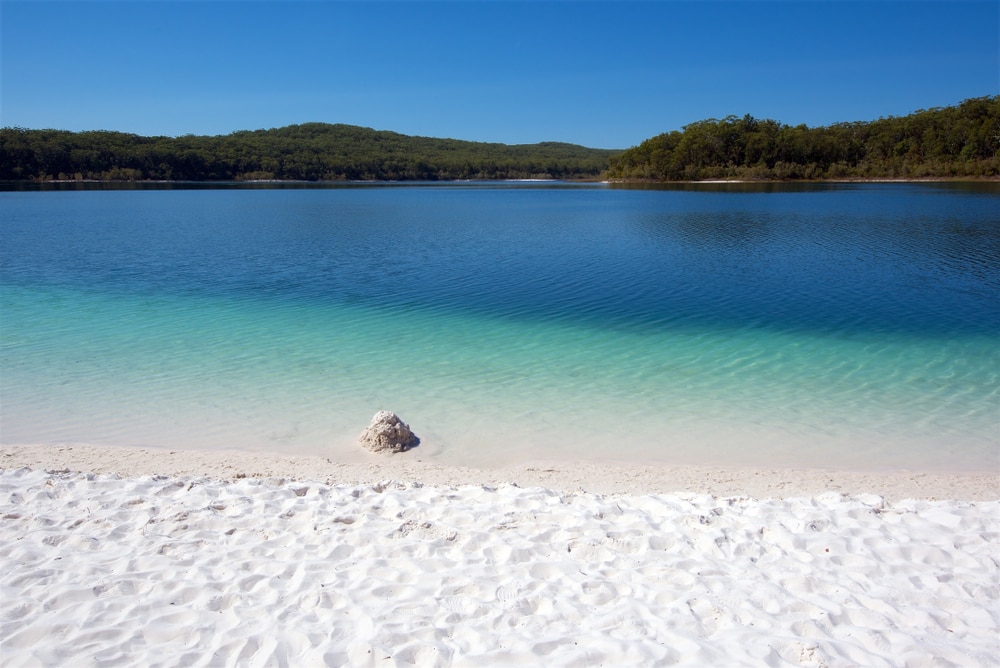
Freshwater is primarily natural and organically derives from the earth in one way or another. It is often present in the rivers, wells, streams, ponds, lakes, and wetlands, making up 2.5% of the earth’s water content.
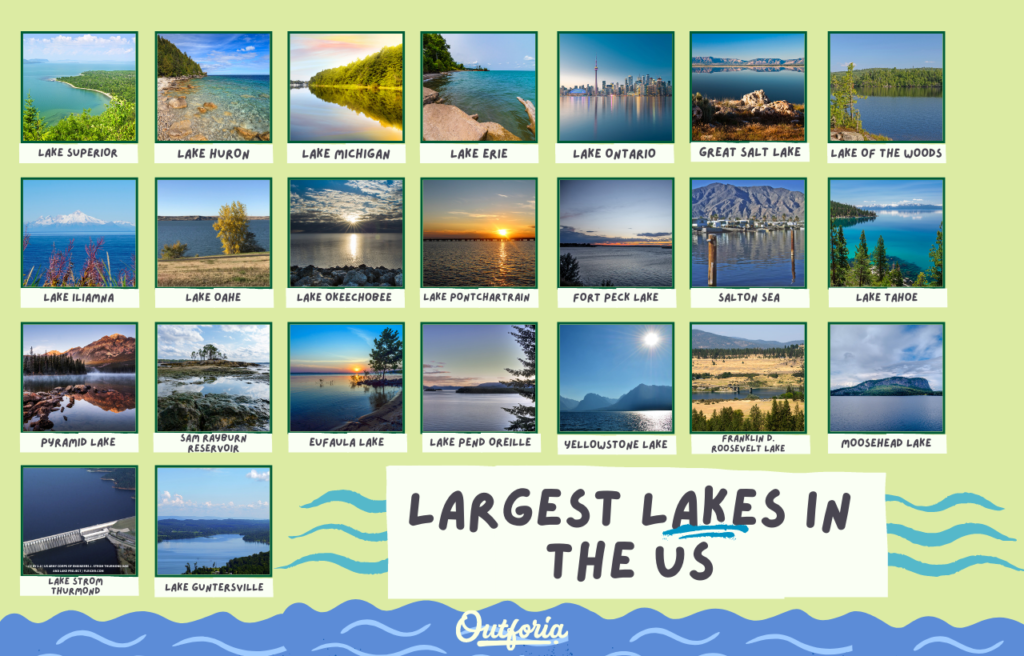
You May Also Like: Learn These 47 Types of Bodies of Water with Photos, Infographics, Facts, and more!
Different Types of Lakes
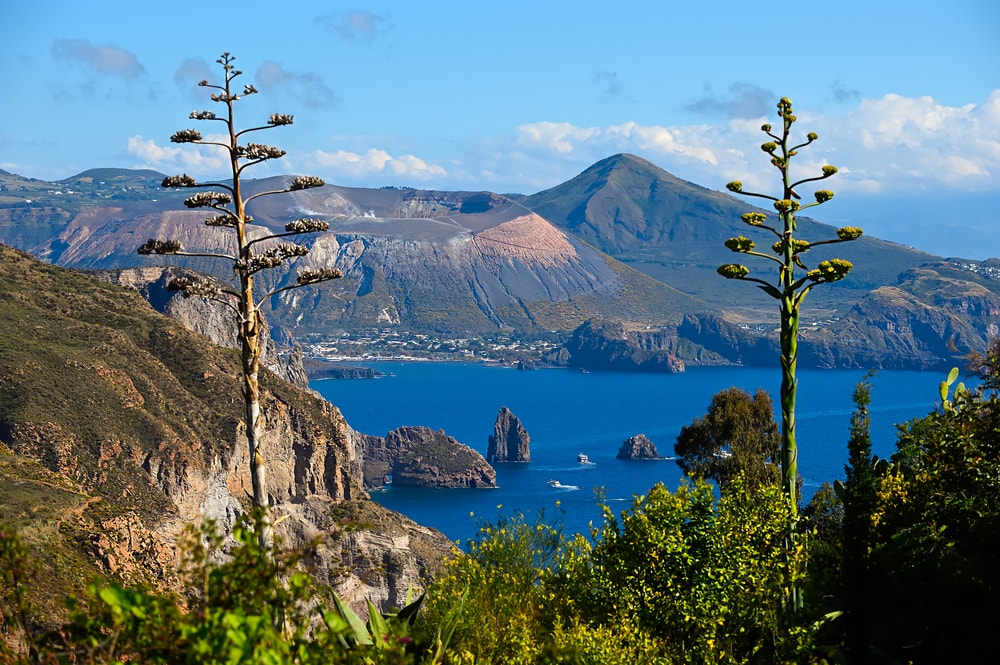
There’s more than one type? Yes!
Organic lakes are formed by the action of flora or fauna. For example, when a reservoir is created by the damming of a river due to beaver activity.
Volcanic lakes are formed in volcanic craters.
Glacial lakes are created by the melt-off from glaciers.
Tectonic lakes are formed by the earth’s tilting movements.
Fluvial lakes are formed by the running water of rivers.
Landslide lakes are created when a river is naturally blocked by debris resulting from a rock avalanche, landslide, mudflow, or volcanic eruption.
Solution lakes are formed when the bedrock is solvable and the dissolution of the bedrock by precipitation and penetrating water results in the formation of cavities that fill with enough precipitation.
Aeolian lakes are the result of wind activity when layers of sand act as natural dams.
Shoreline lakes form along coastlines and sometimes between islands and the mainland. They can be the result of wave currents.
Anthropogenic Lakes, such as dams and reservoirs, are a direct or indirect result of human activities.
Meteorite lakes, also crater lakes, are formed in the depressions made by the impact of a meteor or asteroid crashing onto the Earth’s surface.
Largest Lakes in the US
1. Lake Superior (Michigan, Wisconsin, and Minnesota)
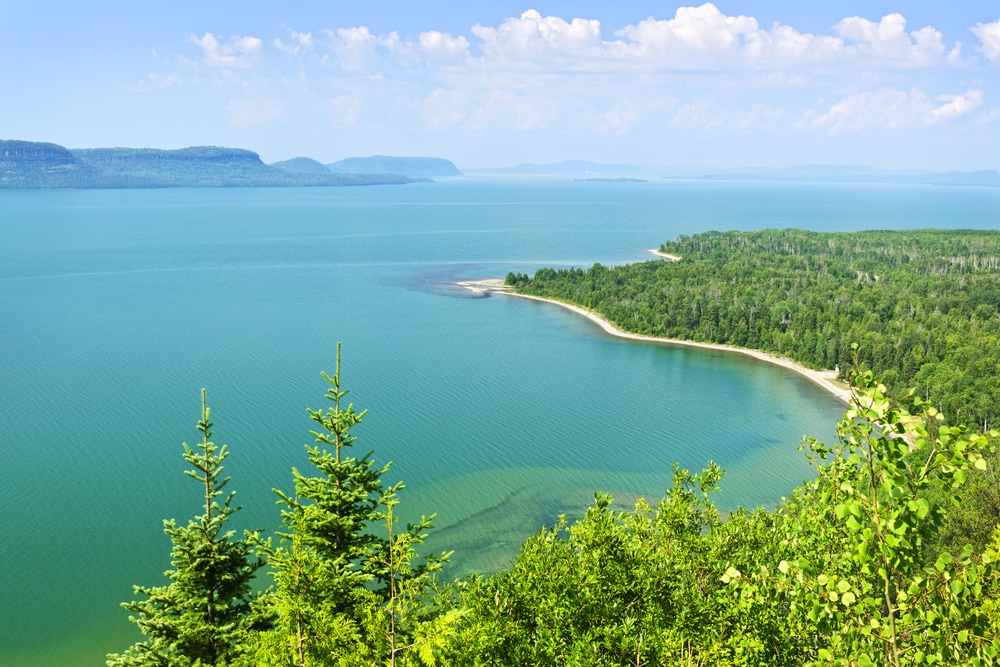
Lake Superior is 20,287,963 acres (8,210,247 hectares), covers 2,726 miles (4,387 kilometers) of shoreline, and along with the other lakes that make up the Great Lakes, it’s the largest body of freshwater with three quadrillion gallons. Its water is fed from roughly 200 rivers, including the Nipigon and St. Louis rivers. It’s one of the five Great Lakes. Its deepest section is an incredible 1,332 feet (406 meters).
To get to Lake Superior, you can head into the northern edge of Wisconsin, the upper Michigan peninsula, the eastern edge of Minnesota, or to Ontario, Canada. Depending on where you are, there are a plethora of activities you can do during a visit. Swimming, boating, hiking, jet-skiing, picnicking, and more. Not too shabby for one of the world’s largest lakes.
Lake Superior has been struggling with the impact of humans since its creation. Issues include the industrial revolution, the collapse of commercial fisheries, phytoplankton blooms, high water levels, and reduced ice cover.
Large American cities bordering Lake Superior are Duluth, Superior, and Marquette. All offer museums, tours, outdoor recreation, shopping, dining, wining, spas, lodging, transportation, and local festivals and theme parks.
2. Lake Huron (Michigan)
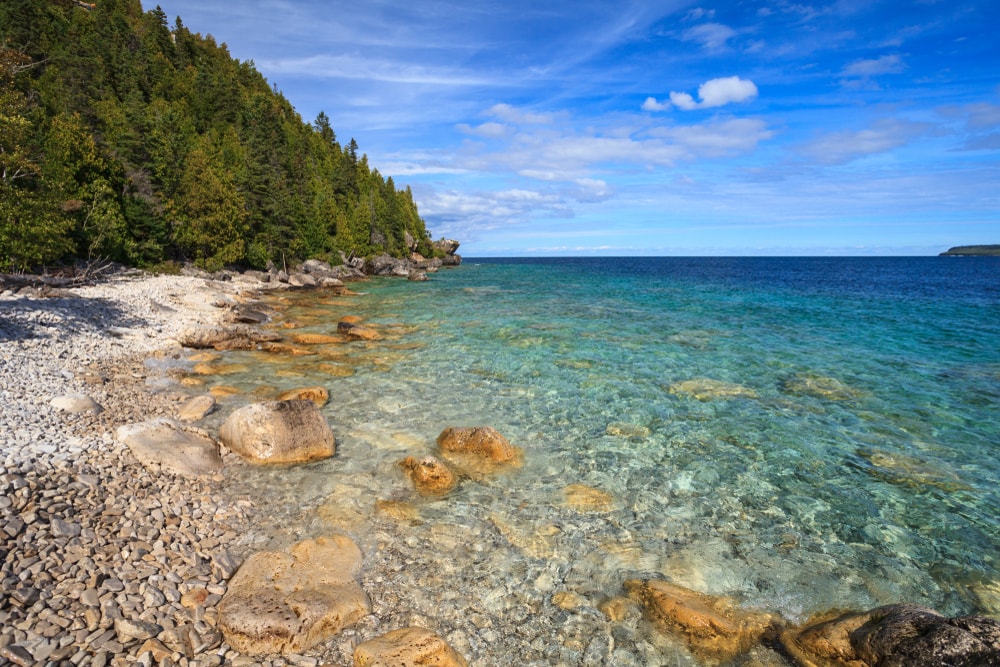
Lake Huron is one of the five Great Lakes and the second largest of the five. It covers 23,000 square miles (59,570 square kilometers) with roughly 800 billion gallons of water and 3,830 miles (9,920 square kilometers) of shoreline, including its 30,000 islands. The max depth in Lake Huron is 751 feet (229 meters). You can also view this lake in Canada.
Lake Huron gets its water from Lake Michigan and Lake Superior. You can find this lake in west Michigan or on the north and east by Ontario. It’s popular for its clear turquoise color, beaches, and swimming.
Habitat loss, habitat degradation, and habitat fragmentation are all participating in major threats to Lake Huron. The biggest US cities bordering Lake Huron are Bay City, Port Huron, and Alpena.
3. Lake Michigan (Illinois, Indiana, Wisconsin, and Michigan)
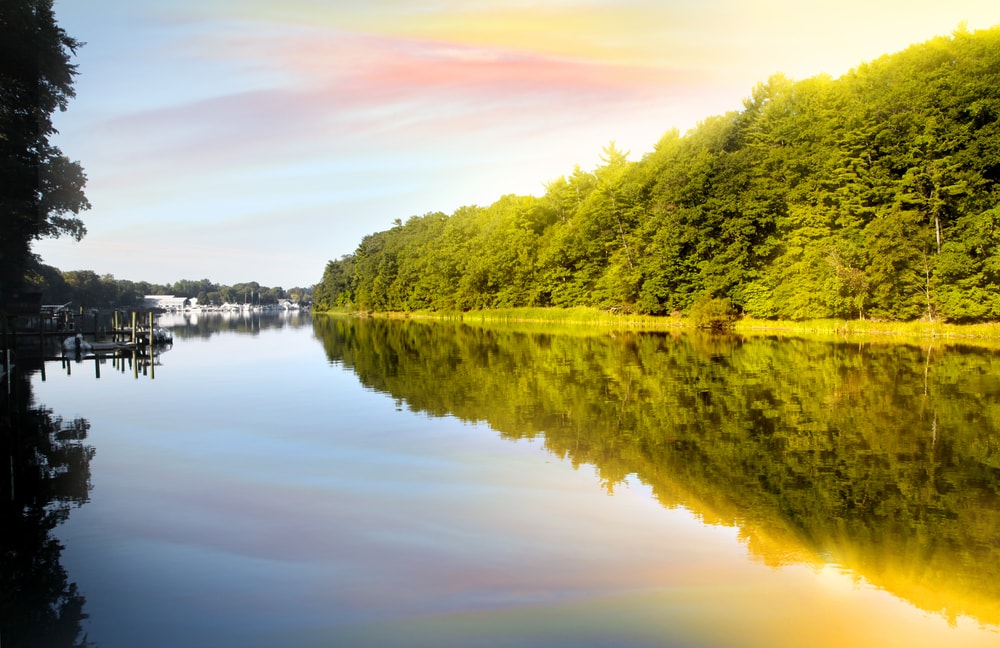
No surprise that number three is another Great Lakes lake. It’s the only one of the Great Lakes to be located entirely in the United States. Lake Michigan is 14,339,503 acres (5,802,991 hectares) with roughly 1,600 miles (2,575 kilometers) of shoreline and filled with a quadrillion gallons of water. Its depth reaches 922 feet (281 meters).
This lake drains into Lake Huron through the waterways of the Straits of Mackinac. Many historical artifacts have been found at the bottom of Lake Michigan, including a boulder with a carving of a mastodon.
Like all of the Great Lakes, Lake Michigan is suffering from invasive species, toxins, water diversion, wetland destruction, sewage overflows, and climate change. Chicago, Waukegan, Gary, Traverse City, Green Bay, Kenosha, and Milwaukee are seven cities that border Lake Michigan and have plenty of indoor and outdoor activities.
4. Lake Erie (Michigan, Ohio, Pennsylvania, and New York)

In addition to the four states listed above, you can enjoy some quality time at Lake Erie in Ontario, Canada, as well. It covers 6,361,471 acres (2,574,396 hectares), has 871 miles (1,402 kilometers) of shoreline, and contains 127.6 trillion gallons of water. Though it’s roughly 210 feet (64 meters) deep, it’s the 11th largest lake in the world by surface area.
The majority of Lake Erie’s water comes from the Detroit River. Though it averages a depth of 62 feet (19 meters), it’s considered the shallowest of the Great Lakes. With more than 26 islands, there’s also plenty of sunbathing, swimming, and splashing around in this lake. For more things to do, make your way to Cleveland, Buffalo, Toledo, Mento, Norwalk, or Port Clinton.
The Lake Erie ecosystem is seeing major threats from land use, the excessive use of its natural resources, chemical and biological contaminants, and non-native invasive species.
5. Lake Ontario (New York)
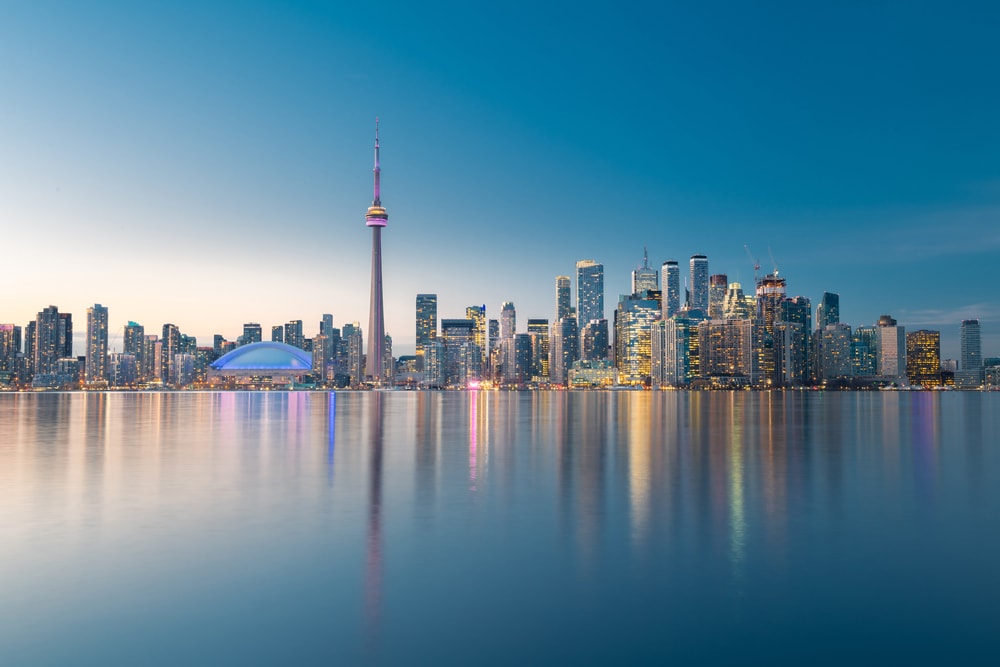
Lake Ontario is unique because it’s the only body of water where two places meet right in the middle. It’s positioned at the base of Niagara Falls in New York and surrounded by Ontario on the north, west, and southwest sides.
The fifth of the Great Lakes is 801 feet (244 meters) deep, covers an area of 4,685,111 acres (1,895,997 hectares) with 712 miles (1,146 kilometers) of shoreline, and six quadrillion gallons of water. It gets its water from Lake Erie and discharges through the Niagara River.
The greatest threats to Lake Ontario are urban development, electricity generation, and sewage and stormwater pollution. Only one American city, Rochester, borders Lake Ontario. Canadian cities found near the lake are Toronto, Kingston, Mississauga, and Hamilton.
6. Great Salt Lake (Utah)
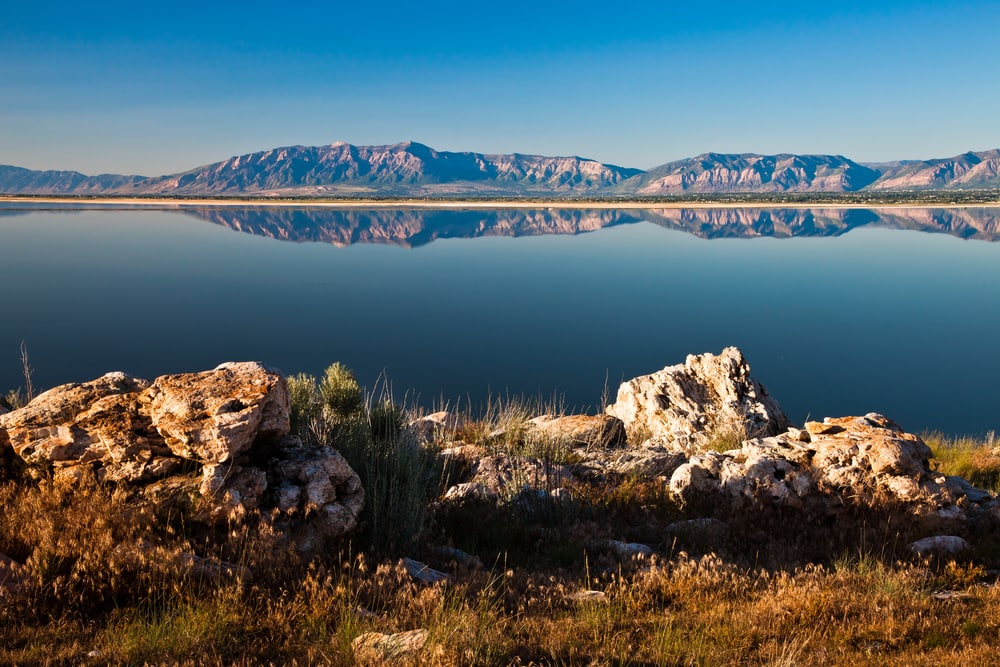
Great Salt Lake, appropriately named, is the largest saltwater lake in the Western Hemisphere and is the 8th largest lake in the world. It’s located in Salt Lake City, Utah. The area the lake covers is 1,087,262 acres (439,999 hectares), has 10,000 miles (16,093 kilometers) of shoreline with 326,000 gallons of water.
Great Salt Lake gets its water from several sources, including four rivers and numerous streams. Its depth is between 14 and 33 feet (4 and 10 meters). Migrating birds are attracted to this lake for its unique ecosystem.
Two parks are part of Great Salt Lake: Antelope Island State Park and Great Salt Lake State Park. Both are great places to enjoy the lake, as well as hiking, camping, wildlife, and picnicking. Box Elder, Davis, Tooele, Weber, and Salt Lake counties all share claim to Great Salt Lake.
Suburban development, highways on the shores of the Lake, diversions of water out of the Lake, rivers, and streams that flow into it, as well as water pollution from mining operations, municipal runoff, and sewage discharge all threaten the lake. Another concern has been a proposed dam on the Bear River that would reduce water flows into Great Salt Lake.
7. Lake of the Woods (Minnesota)
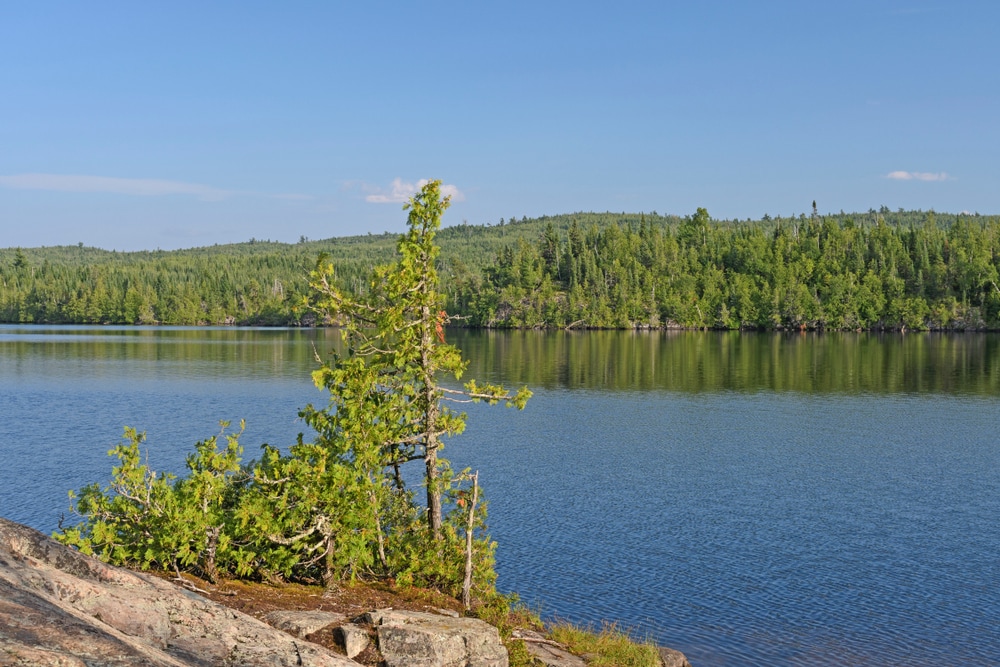
Lake of the Woods is located in the town and county of the same name in Minnesota. Over 14,552 islands help make up this forest waterscape getaway. Lake of the Woods with 142,917,090 gallons of water, contains 65,000 miles (104,607 kilometers) of shoreline, covers 950,400 acres (384,613 hectares), and is 210 feet (64 meters) deep.
The lake offers endless fishing, canoeing, and outdoor relaxation. It’s also an important habitat for wildlife. You can find walleye, northern pike, perch, sauger, crappie, smallmouth bass, largemouth bass, lake trout, lake sturgeon, whitefish, suckers, and the very large muskellunge. Sounds like a fisherman’s paradise.
Contaminants, excess nutrients, and algae that are toxic to fish, birds, animals, and people, are threats to Lake of the Woods. Lake of the Woods also occupies parts of Ontario and Manitoba in Canada.
8. Lake Iliamna (Alaska)
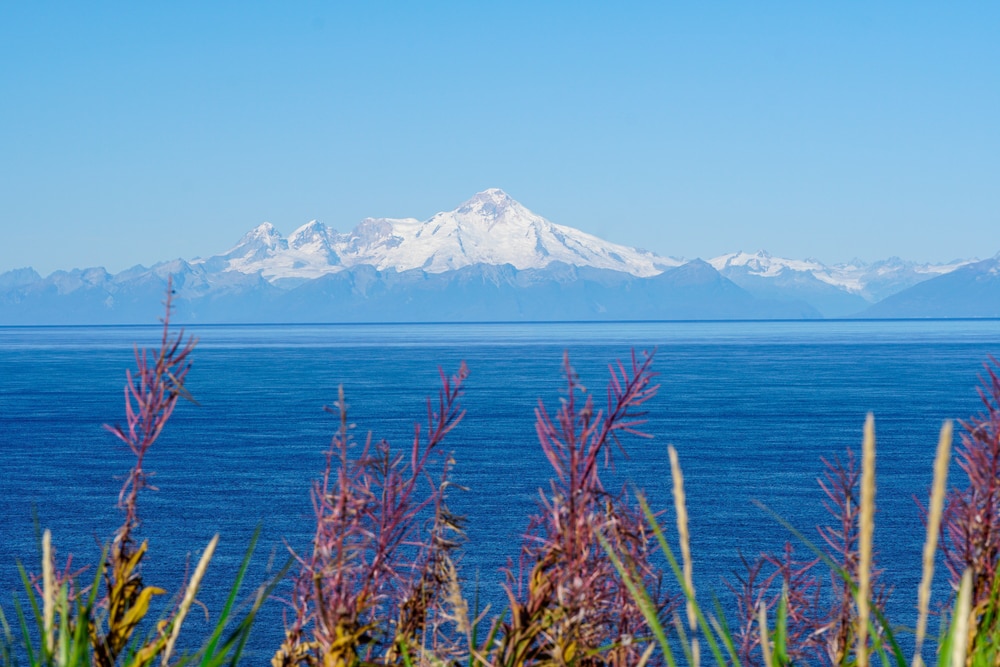
Welcome to the last Frontier! Alaska’s largest lake covers 647,999 acres (262,236 hectares), has roughly 283 miles (455 kilometers) of shoreline, and is 984 feet (300 meters) deep. The Kvichak River supplies much of the lake’s water and it drains into Bristol Bay. Lake Iliamna is near Lake Clark National Park and Preserve and Katmai National Park and Preserve.
The lake is known for the legend of Illie, the lake’s resident 30-foot (9 meters) monster. Perhaps, it’s just one of the many whales you can witness living in Lake Iliamna. The area offers fishing, boating, bush plane chartering, hiking, and wildlife viewing.
Large-scale mining operations and climate change are the two major concerns for the lake. Towns and villages near Lake Iliamna are New Haven, Kokhanok, Igiugig, and of course, Iliamna. Plenty of nature surrounds these places, making it an outdoor enthusiast’s dream.
9. Lake Oahe (North and South Dakota)
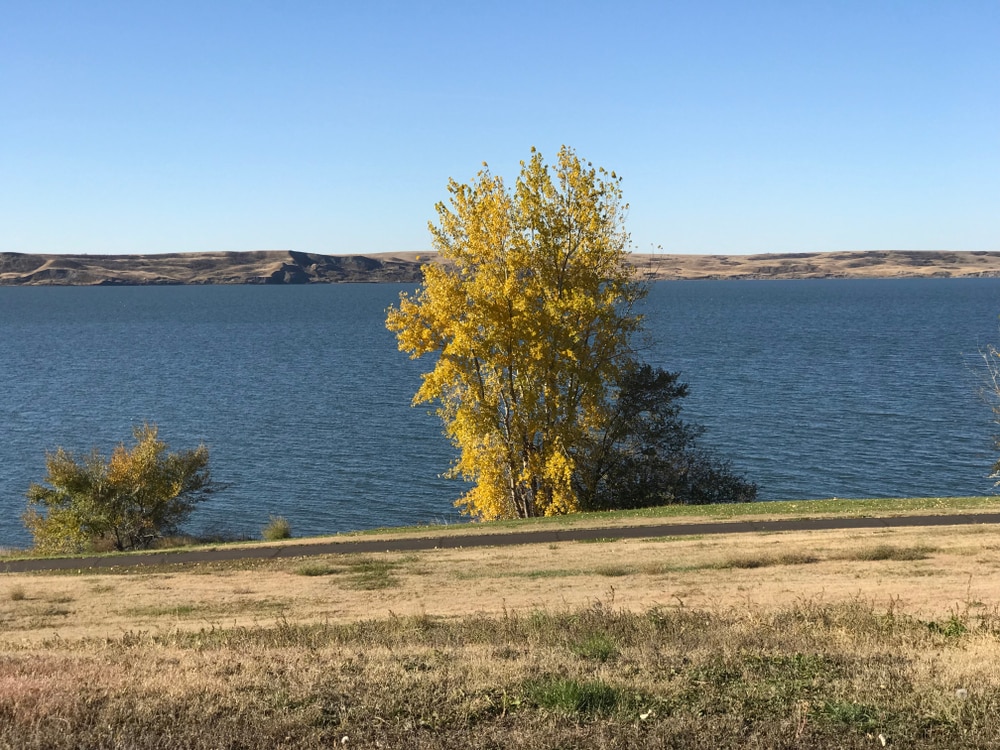
Lake Oahe is a large reservoir behind Oahe Dam on the Missouri River. It begins in central South Dakota and continues into North Dakota, covering 370,000 acres (149,734 hectares). Its shoreline is 2,250 miles (3,621 kilometers) with a maximum depth of 205 feet (62 meters).
It’s the fourth-largest reservoir in the United States. Camping, picnicking, fishing, hunting, boating, water skiing, swimming, bird watching, hiking, and biking are among the activities you can enjoy in Lake Oahe and the reason 1.5 million people visit each year. What makes this lake dangerous are the numerous people swimming and spearfishing in the turbulent waters of the Oahe Dam.
Pierre, Fort Pierre, Mobridge, Pollock, and Bismarck are a few of the cities bordering Lake Oahe. Other smaller towns can be found near the lake to increase the number of activities you will find in the area.
10. Lake Okeechobee (Florida)
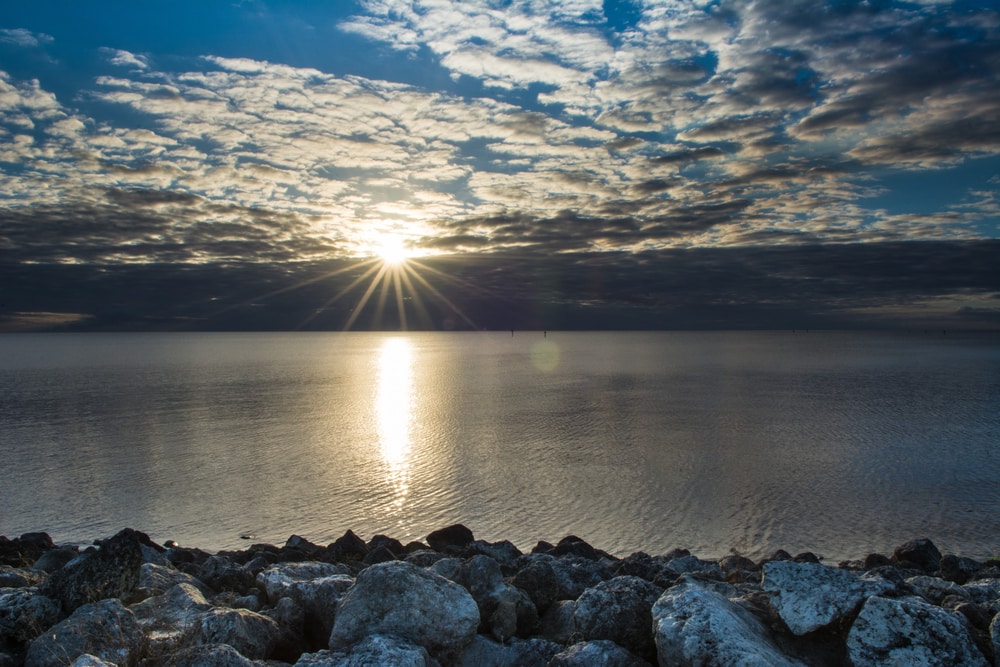
We’ve been to the wintery depths of Alaska, Minnesota, Wisconsin, and the Dakotas. Now it’s time to enjoy the sun at Lake Okeechobee in sunny Florida. Covering 467,199 acres (189,069 hectares), a shoreline of 135 miles (217 kilometers), filled with one trillion gallons of water and reaching a depth of 12 feet (4 meters), it’s no wonder gators feel at home here.
You can enjoy Lake Okeechobee in Glades, Okeechobee, Martin, Palm Beach, or Hendry county. Kissimmee River is the lake’s primary source of water and is the third-largest freshwater lake in the US.
The water discharged from Lake Okeechobee is dirty and carries pollutants, which contribute to algae that are harmful to people and wildlife. The lake isn’t shared by multiple cities, so if you want to enjoy it, there’s only one place to find it. In the city of Okeechobee, Florida.
You May Also Like: Learn What Causes Tides and its Definition with Guide, Infographics, Photos, and more!
Additional Lakes Found in the US
The following lakes aren’t as large as our top 10, but with their unique characteristics, they’ve more than earned a rightful place on our list.
11. Lake Pontchartrain (Louisiana)
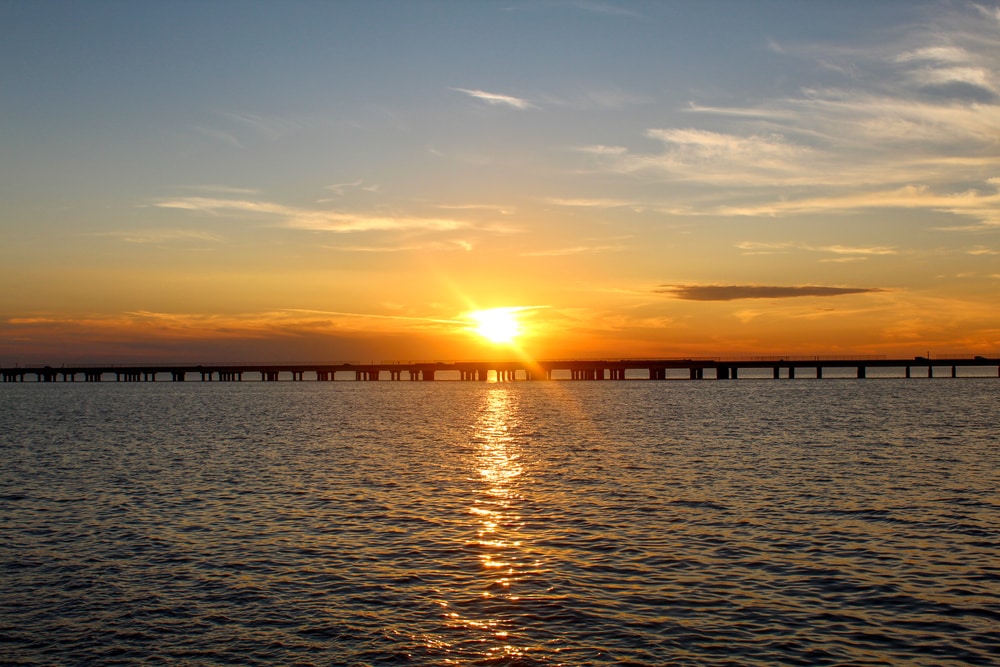
Lake Pontchartrain surrounds the longest causeway bridge in the world and is found in Louisiana. It covers 125,000 acres (50,586 hectares), 125 miles (201 kilometers) of shoreline, and is 14 feet (4 meters) deep. The lake gets its water from Lake Maurepas, the Tangipahoa and Tchefuncte Rivers, Bayous Lacombe and Bonfouca, canals, and saltwater from the Gulf of Mexico.
12. Fort Peck Lake (Montana)
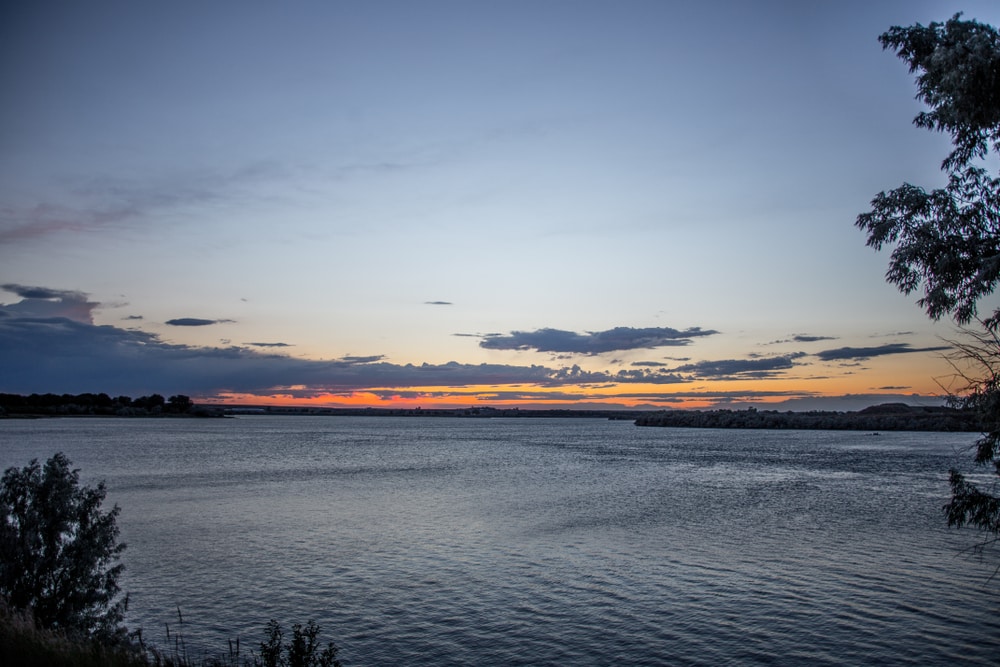
Fort Peck Lake covers 245,000 acres (99,148 hectares) near Glasgow, northeastern Montana, and is fed by the Missouri River. It can go as deep as 220 feet (67 meters) below the surface and its shoreline miles are 1,520 (2446 kilometers).
13. Salton Sea (California)

For its 7.5 million acre (3,035,142 hectares) size, the Salton Sea needed to make our list. Approximately 110 miles (177 kilometers) of shoreline and 420 trillion gallons of water create this impressive lake. Its maximum depth is 52 feet (16 meters). Roughly 85% of the water feeding the Salton Sea comes from the Imperial Valley and 15% comes from local rivers.
14. Lake Tahoe (California and Nevada)
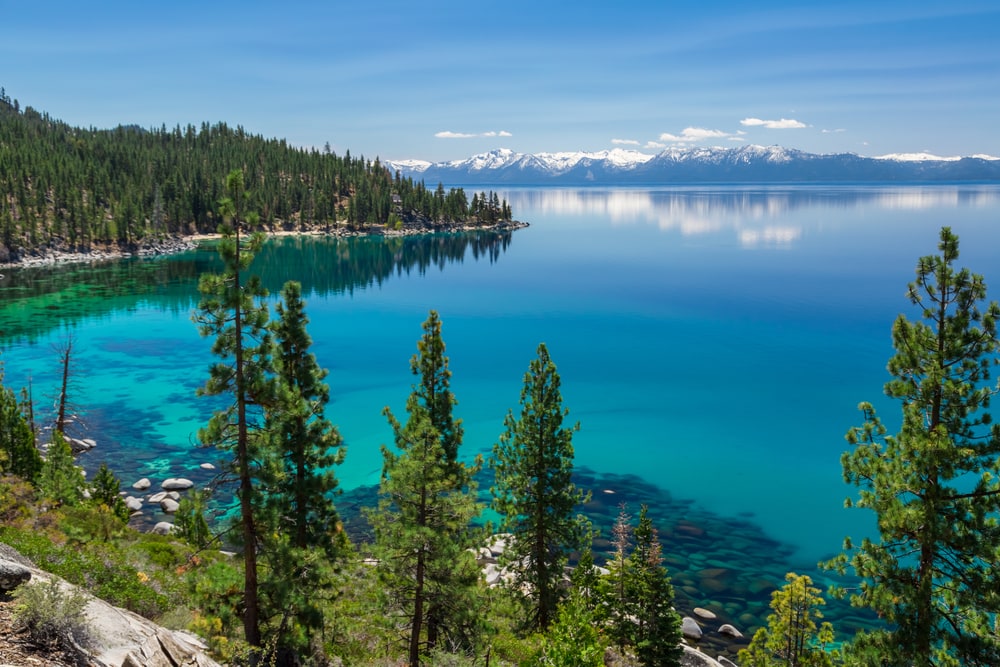
Seventy-two shoreline miles and 37 trillion gallons of water create the largest alpine lake in North America, with 105,000 acres (42,492 hectares) and depths of 1,645 feet (501 meters). Lake Tahoe receives 65% of its water from the runoff of 63 tributaries and 35% falls as precipitation directly on the Lake.
15. Pyramid Lake (Nevada)
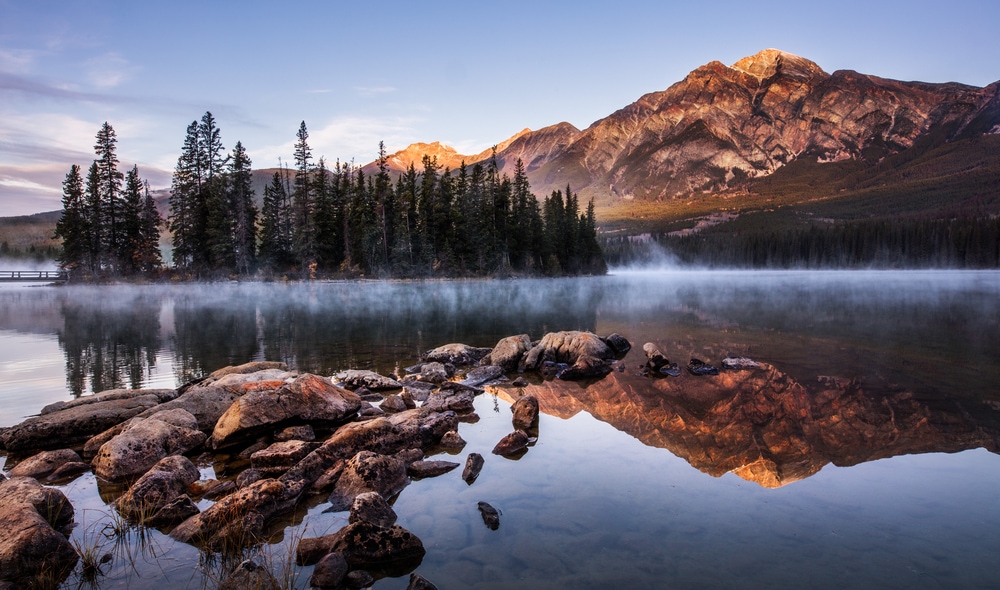
A large portion of the water flowing into Pyramid Lake comes from Lake Tahoe. Pyramid Lake spans 125,000 acres (50,586 hectares) with depths of 344 feet (105 meters) and covers 21 miles (34 kilometers) of shoreline. It’s one of the largest natural lakes in the state of Nevada.
16. Sam Rayburn Reservoir (Texas)
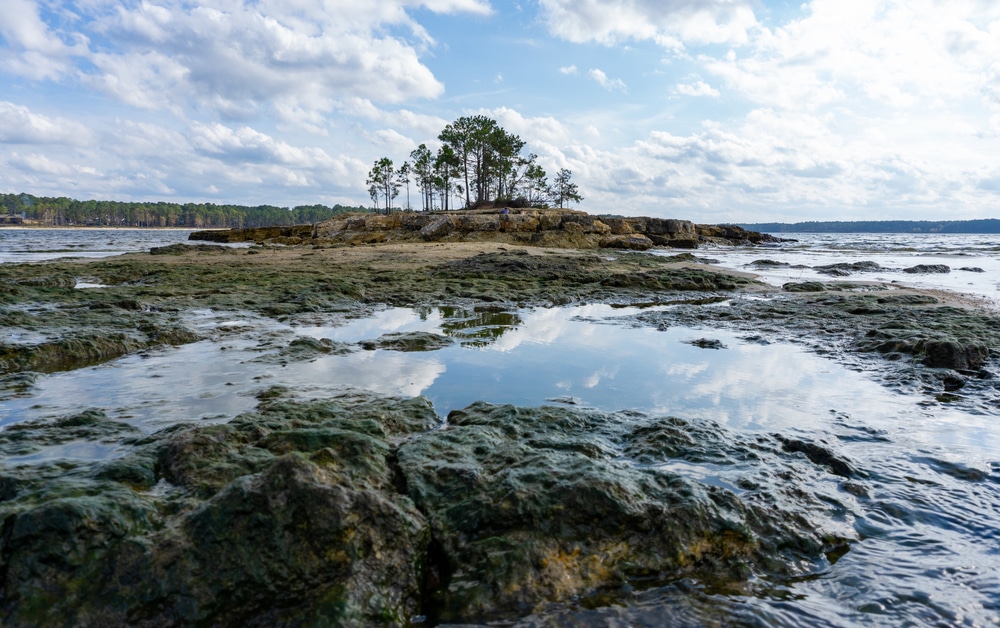
Sam Rayburn Reservoir rests 70 miles (113 kilometers) north of Beaumont. The reservoir is fed by the Angelina River and its 80 feet (24 meters) in depth can hold 3,997,600 acre-feet of water. The shoreline at top of the conservation pool is over 750 miles (1,207 kilometers) long.
17. Eufaula Lake (Oklahoma)
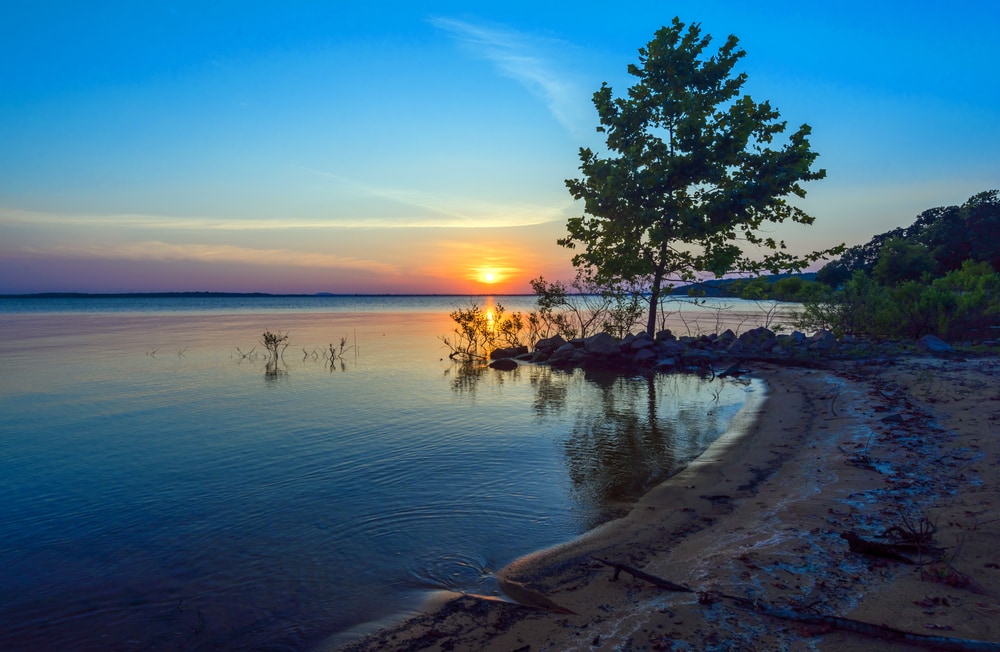
This 600-mile (966 kilometers) lake spans from McIntosh County, Pittsburg County, Haskell County, and into Okmulgee county. Its water sources include the Canadian, North Fork Canadian, and Deep Fork rivers. It covers 105,500 acres (42,694 hectares) with a maximum depth of 87 feet (27 meters).
18. Lake Pend Oreille (Idaho)
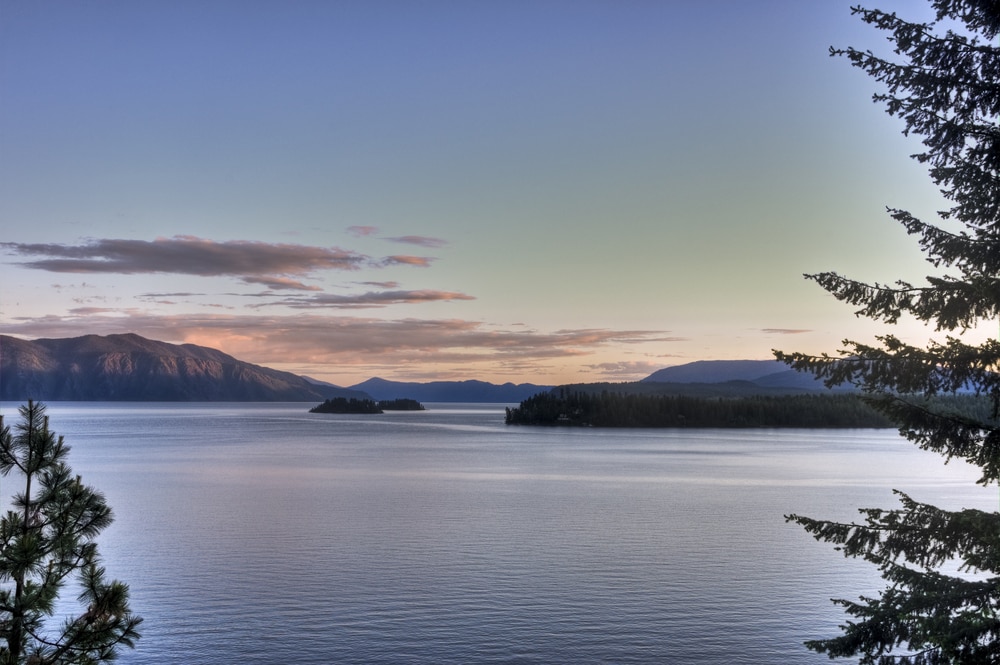
Lake Pend Oreille is Idaho’s biggest lake with 111 miles (179 kilometers) of shoreline and depths reaching 1,150 feet (351 meters) in some parts. The lake is fed by the Clark Fork River and the Pack River and drains into the Pend Oreille River.
19. Yellowstone Lake (Wyoming)
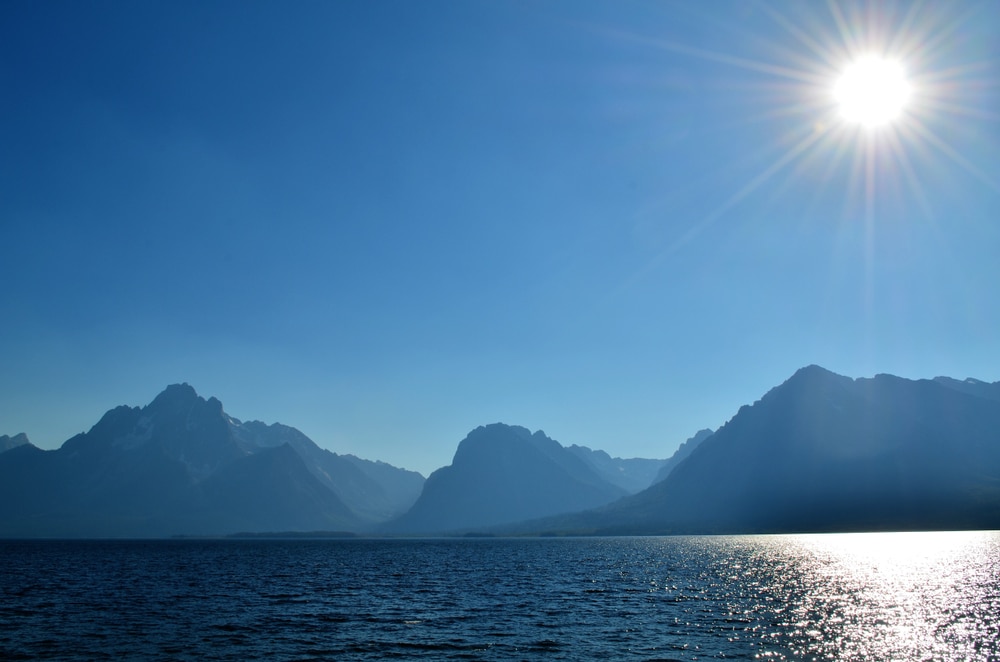
Over 141 tributaries and one river, Yellowstone River, enter Yellowstone Lake. The lake is 394 feet (120 meters) deep, has 141 miles (666 kilometers) of shoreline, four trillion gallons of water, and dominates 453 acres (183 hectares).
20. Franklin D. Roosevelt Lake (Washington)
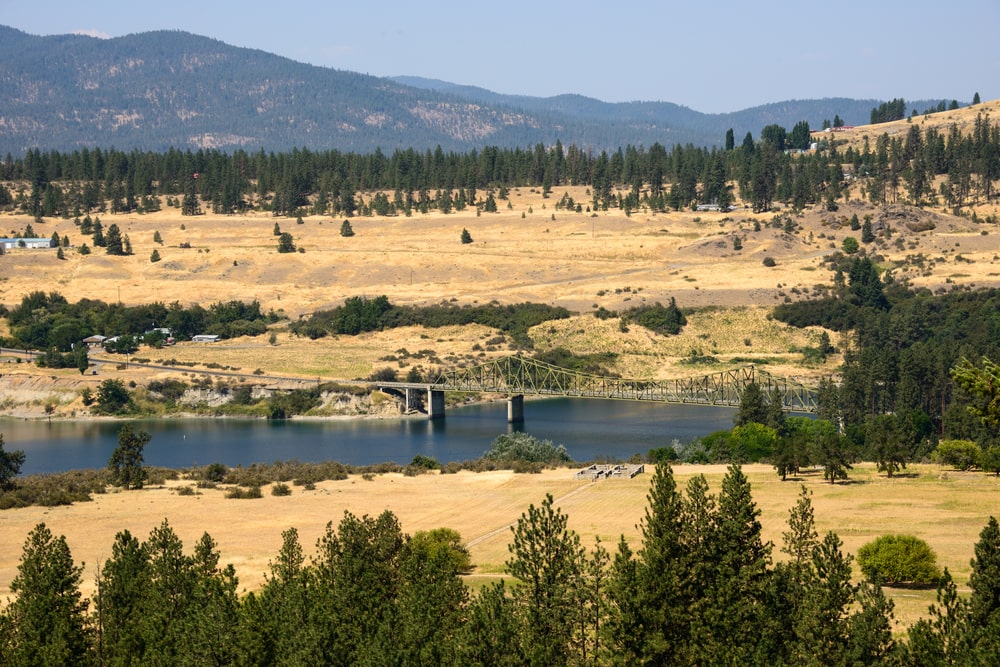
At its fullest, it reaches 375 feet (114 meters) in depth, covers 80,000 acres (32,375 hectares), 600 miles (966 kilometers) of shoreline, and contains more than 814 billion gallons of water. About 89% of Lake Roosevelt’s water comes from the Columbia River. The Spokane River feeds it 7% of its water and 4% comes from a combination of the Colville, Kettle, and Sanpoil Rivers.
21. Moosehead Lake (Maine)
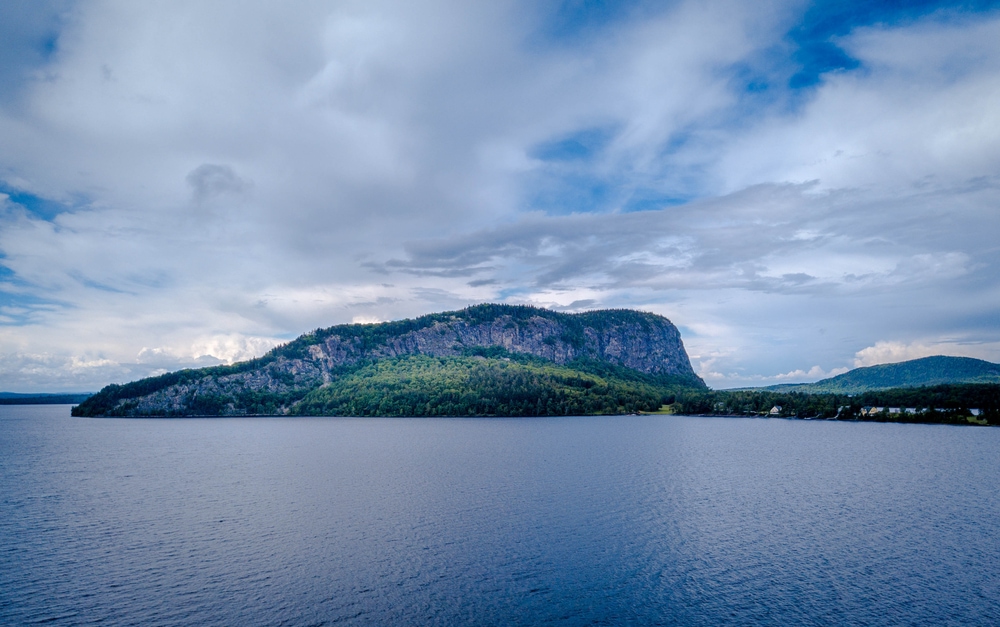
Moosehead Lake is 246 feet (75 meters) deep and receives its water from Moosehead River but also the Kennebec River. It covers almost 75,000 acres (30,351 hectares) with 400 shoreline miles and holds about two billion gallons of water.
22. Lake Strom Thurmond (Georgia and South Carolina)
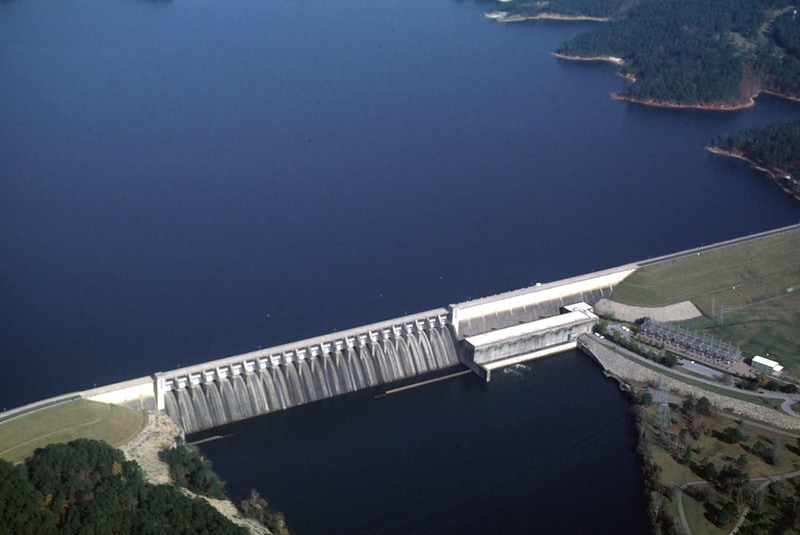
This borders Georgia and South Carolina on the Savannah, Broad, and Little Rivers. It can reach 180 feet (55 meters) deep, covers 1,200 miles (1,931 kilometers) of shoreline, 71,100 acres (28,773 hectares), and can hold nearly 815 billion gallons of water at its fullest.
23. Lake Guntersville (Alabama)
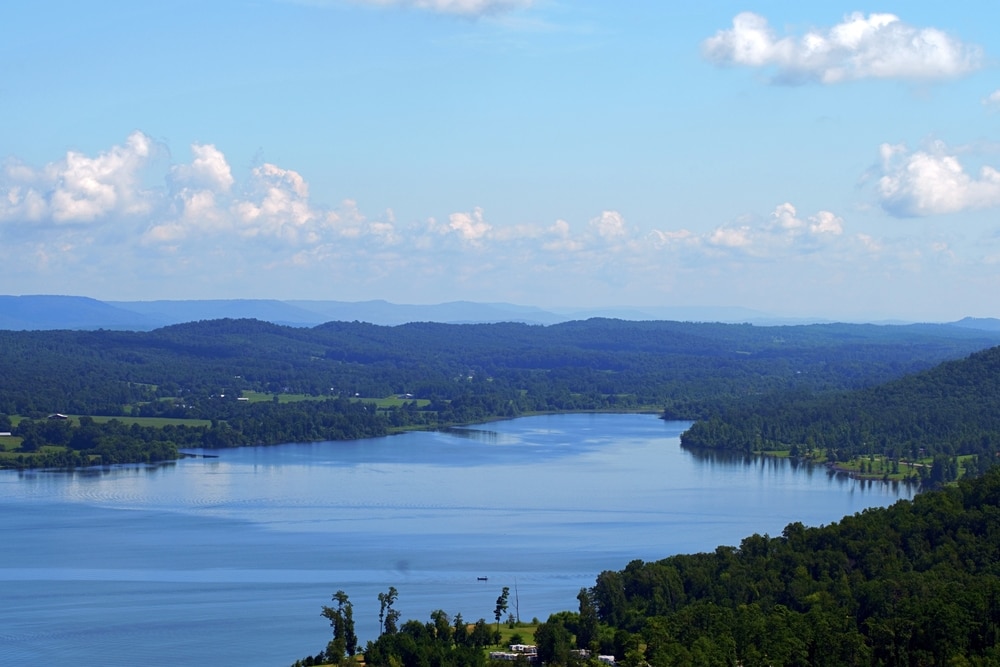
At 594 feet (181 meters) in elevation, Lake Guntersville can get 60 feet (18 meters) deep. You can find this lake in the south in the counties of Jackson and Marshall in Alabama. It covers 890 miles (1,432 kilometers) of shoreline and is 67,900 acres (27,478 hectares). The Tennessee River is the lake’s only water source.
You May Also Like: Discover These 12 Different Types of Ecosystems and Why They Are Important with Photos, Facts, Infographics, and more!
Fun and Interesting Facts on Biggest Lakes in the US

You May Also Like: Here Are The Best Waterfalls in Pennsylvania That You Should Know About with Facts, Guide, Infographics, and more!








